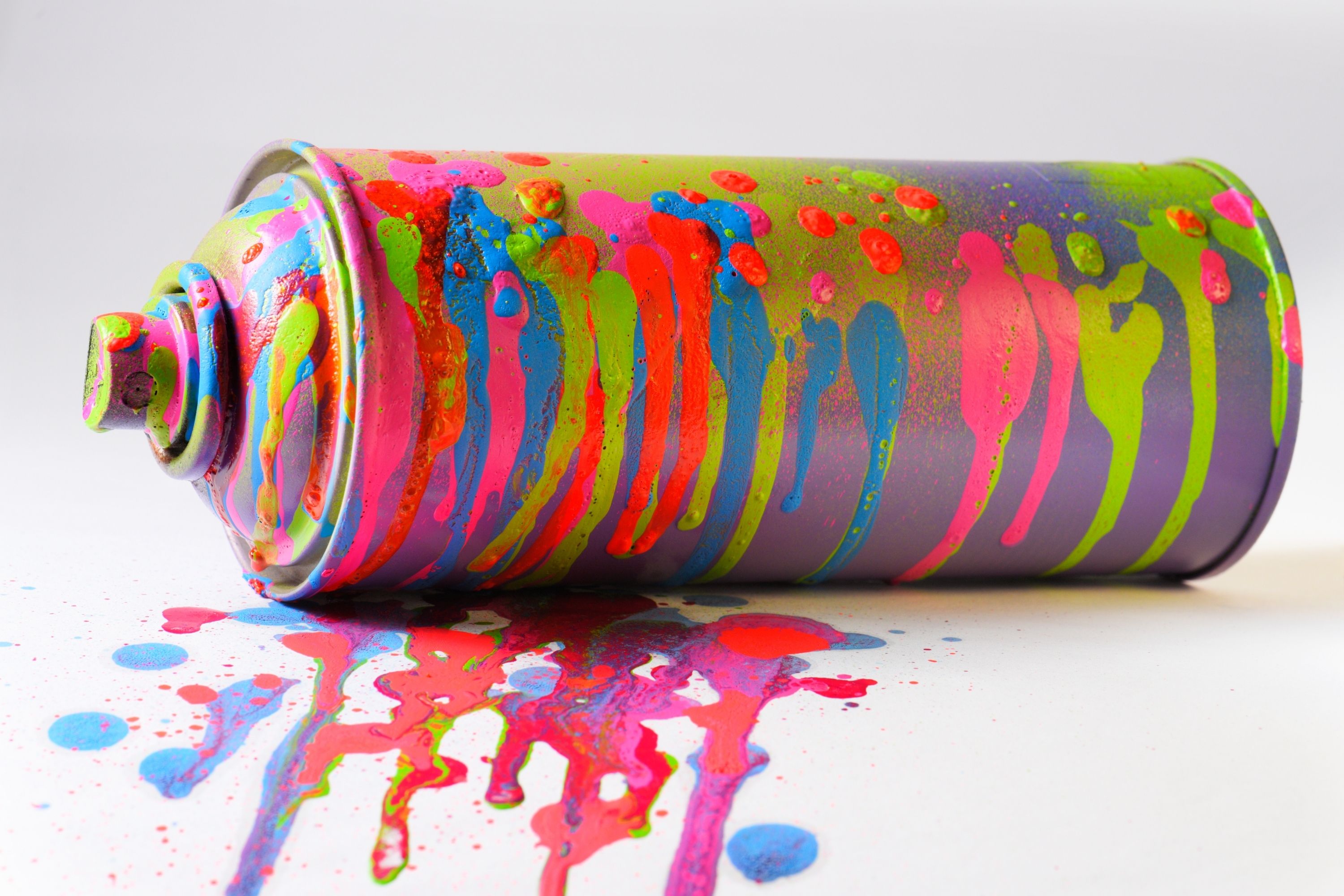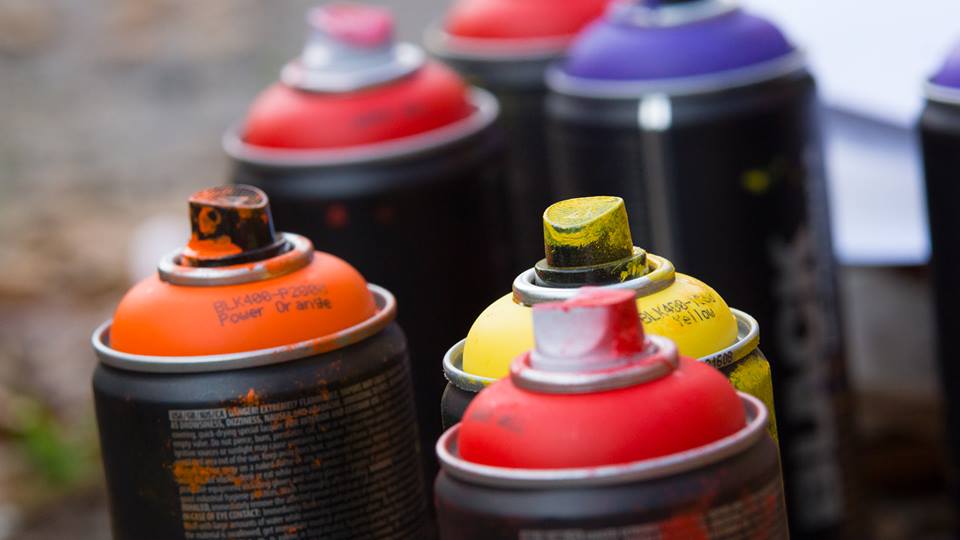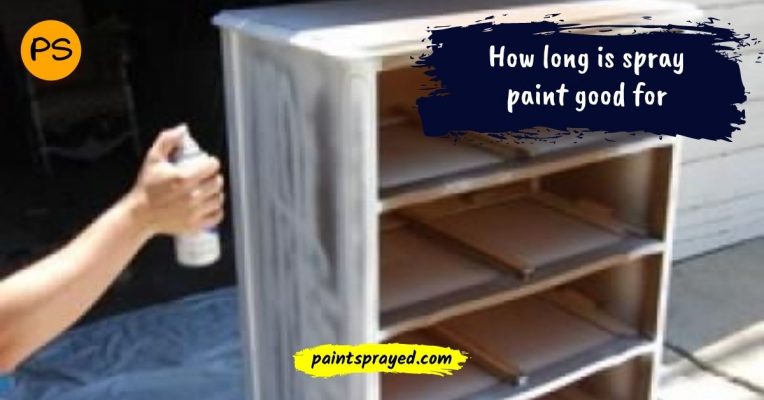Not always the use of spray paint ends up with a good result. Sometimes the painted surfaces, even after a while, are all still sticky, which raises the question of whether this is normal and how to make spray paint not sticky. There are a few options for fixing the problem, so after studying the topic, everyone can choose the most appropriate one for themselves. Let’s figure out how long it takes for spray paint to stop being tacky and what you can do.

Do all spray paints dry the same fast?
The approximate drying time for most spray paints is the same, but the characteristics of the individual products can’t be ignored. It depends on the type of paint, its composition, and other characteristics that are specific to each producer.
In some situations, a sticky painted surface lasts only 2 to 4 hours, while in others it will remain so even after 24 hours.
Of course, latex paint can dry even longer, but in any case, you may refer to the text on the spray paint bottle. This place will indicate the estimated drying time along with other product details.
Nevertheless, this estimate is just a rough guide. Several factors can influence how long it takes for spray paint to dry, such as the humidity level, air movement, and the type of spray painting surfaces.
Will tacky spray paint eventually dry?
Choosing an aerosol product may be taking longer than anticipated to paint dry, and impatience could be a possible cause. It’s useful to note that some spray paints may require multiple days or even weeks to completely dry. So, don’t panic and think in advance about how to make spray paint not sticky.
If you notice that the product is taking longer to dry than you expected, refer to the label for the maximum recommended drying time provided by the producers.
If you need to speed up the drying process, it’s worth taking advantage of standard tips like using talcum powder, baking soda, or auto wax.
What to do when spray paint is sticky?
To address sticky spray paint, a painter can thin it out using a compatible paint thinner such as mineral spirits or lacquer thinners. Begin by mixing 1 part mineral spirits with 3 parts paint and thoroughly stir the mix.
Apply it over the desired area to help decrease the stickiness. If the product remains too thick, gradually increase the amount of solvent in the mixture until you achieve your desired consistency.
It’s useful to test any solvents or mixtures on an inconspicuous part of the items before using them on the intended surface to prevent any corruption.
When using too many coats of spray paint, each layer may require additional drying time. Typically, the covering will dry properly to the touch in about 15 minutes. However, it’s better to wait at least 24 hours for the paint to fully cure. This rule is also followed by the professional painter.
7 Ways to help prevent sticky spray paint
To exclude the issue of sticky spray paint or any other paint-related problems, it’s important to take into account some best practices when spray painting. These practices include next follow:
- Start by cleaning the area thoroughly to remove any dirt. Also, dry it completely.
- After using primer, apply high-quality paint, but before that shake it well for ideal spray painting.
- Check the nozzle of the spray can for any blockages.
- Monitoring humidity levels and storage process of paint (this will avoid reducing its functionality).

Using an old product for multiple coats is highly undesirable, as it can increase the likelihood of sticky paint. It’s best to use fresh paint for each coat to ensure the best possible outcomes. Let’s consider these hints in more detail.
The right preparing the surface for painting
Before starting the paint job, it’s worth preparing all the necessary tools and surface properly.
To avoid the disappointment of sticky spray paint, you need to take some time to prep the surface you are going to paint. The first step in this process is to thoroughly clean and dry the surface. By performing these actions, you can greatly reduce the risk of sticky paint problems.
To prevent sticky spray paint, it is very important to abide by these steps:
Take a damp rag, prepare soapy water or another degreaser, and carefully remove all traces of dirt from the object to be painted.
Use a fine-grit sanding block to create texture on the smooth surface. This way you will help the primer and paint stick to it better.
Iron out any irregularities on the surface that might interfere with proper paint adhere, using a putty knife or sandpaper.
Make sure you are running a fresh bottle of paint, and check its nozzle for clogs.
If the paint has become tacky (especially on thick coats), you can use talcum powder or baking soda to help absorb any remaining moisture in the paint.
Adding a primer
One of the most important components of any painting process is the different primer. It is coated on a clean area and, once dry, creates a base coat that improves the adhesion of the spray paint being sprayed. Some product variants, such as Rust-Oleum, not only improve paint adhesion but also increase the longevity of the area by protecting it from external influences. With the right primer, you can solve the problem of a sticky finish and achieve a flawless job.

Use a higher-quality paint
Spray paint cans must comply with the expiration date indicated by the manufacturer. Cheap products from little-known manufacturers are not the best solution for quality painting. A sticky surface may be due to insufficient amounts of fixing agents in its composition.
Use paint properly
Often, using a spray bottle or gun with a spray paint nozzle at once seems like a simple task, but you still can’t do it without certain skills.
You need to understand how to choose the right paint, prepare the surface, how far to hold the sprayer for proper texture, and how to behave with a freshly painted thing.
Fully dry spray paint will be obtained only if certain painting conditions are met.
Shake the paint can before using
The first step to using spray paint correctly is to shake the can thoroughly at least 10-20 times to ensure that the propellant gas inside is well blended with the coloring compound.
If this isn’t done, only the propellant will get on the coating surface, which means you won’t be successful in painting (you can’t avoid sticky paint). To obtain a perfectly flat finish with a nice sheen, it is very useful to shake the can periodically while painting.
Making the first coat ideal
All subsequent ones will be held on the first coat, so in order not to get a sticky finish, you need to pay due attention to it. Perform a few actions while spraying the first layer:
- choose a suitable coloring composition (possibly oil based spray paints);
- completely dry the priming coat;
- try to make the first coat as thin as possible;
- wait until it dries (for uneven surfaces it can take more time);
- apply the paint again, each time drying the previous layer.
Once the painting work is complete, leave the surface to dry completely for at least 24 hours (professional painter know that). If all is done correctly, an unwanted sticky feeling can be avoided.

Paint in warm enough temperatures
Cold or humid days aren’t the best time to paint. Low temperatures extend the time for the painted surface to dry, especially if there is too much paint on it. It is better to postpone painting until the weather is nice when relatively high temps, wind, and sun will let all coats of paint dry well. The warm summertime is the greatest for spray painting.
Check humidity level
To avoid getting into the hassle of figuring out how to stop spray paint from clumping, it’s best to start painting as soon as the humidity level reaches 40-50%. This approach will produce optimal effects. However, if waiting for ideal natural conditions for any reason isn’t possible, you may have to resort to using fans and heaters to speed up the drying process. The longer the paint stays wet, the more likely it is to become sticky. Therefore, it’s best to minimize the amount of time the paint stays wet to avoid the unwanted sticky feel.
How to fix sticky spray paint. Tips and life hacks
When you put on spray paint multiple coats can try to get things as right as possible, but the stickiness problem often remains as a result. Not only does this compromise the functionality of the painted surfaces in the home, but it often doesn’t produce the visual effect you expect. That’s not a good thing.

Here are a few methods to help the situation, and you’ll usually need fairly common tools and materials to do so. Right here are a few good tip-hacks for removing goo from a freshly painted surface and you’ll need just a few minutes.
Auto wax
If you are experiencing stickiness after applying multiple coats of spray paint, one helpful product is auto wax. Start by applying a thin layer of product to the sticky area, then circularly spread it until the item is smooth.
Wait about 15 minutes for the wax to dry completely. Afterward, with a damp cloth or buffing cloth, clean off any residue. This procedure should leave you with a smooth and dry surface to work on. If the surface is still unsatisfactory, repeat the entire process by applying the car wax again. Using this method, you can guarantee that spray paint willn’t be sticky.
Make good use of talcum powder
If you need to fix sticky paints you can also use dusting powder. It’s great at absorbing moisture, so it can also be used to prevent sticky spray paint.
All you have to do is put a bit of the powder on the sticky area and gently rub it into the paint until it is no longer sticky.

You can even use baking soda instead of baby powder or talcum powder for this purpose. Also, you need a rag or paper towel to remove the residue.
If the coating is painted with a thin coat and it isn’t excess spray paint, after removing the powder residue, you can again cover the surface with a new light coat of paint and dry it well.
Work with oil-based paints
Although oil based paint isn’t always the best solution if you want a faster drying time, it does provide an impressively smooth finish, which is the main goal of any paint job.
Oil paints usually take longer to dry but are more practical and are not sticky once they are completely dry.
If you want your coating to withstand minor mechanical damage and stay attractive longer, Rust-Oleum is the perfect solution.
Use a clear coat or sealer
Alternatively, you could try coating the already-painted tacky surface with a clear sealant. After it dries, the tacky spray paint should no longer be that way.
Try to apply the substance in as small a layer as possible and you will end up with good protection for the surface.

How do you harden spray paint quickly?
It’s no secret that spray painting needs the most suitable temperature conditions, so if you want the painted object to dry faster, put it in direct sunlight with a sufficient flow of air.
If it’s humid and damp outdoors, a home dehumidifier or a heater will help to dry the object. Just don’t place them too close.
What makes spray paint feel sticky at all?
Save paint not sticky it’s possible, of course, if you follow the rules of painting. If, however, even with high-quality material and correct execution of all actions, the surface is still sticky, it is worth considering the following possible causes of this phenomenon.
The nozzle of the can spits
The spray gun is supposed to evenly spray paint, but in some cases, the spray can produce blobs of material rather than a fine spray. There can be several reasons for this situation.
It doesn’t matter if the can is new or has been on the shelf for a long time and needs to be shaken periodically during the painting process.
As the can is shaken, the stirring balls in the container whip up the spray paint from proper viscosity, loosening it at the bottom.
Without proper mixing, it’s impossible to achieve a quality distribution of the composition, so don’t be surprised that the spout may spit.

The nozzle of the can might be clogged
A blocked nozzle is often one of the most common reasons for spray paint sticky. If there are traces of old paint or oils in it, they seriously interfere with the airflow, so you can’t get an even distribution of the material.
You can clean the clog with a pin or needle, and in difficult cases, you will also have to use a solvent.
Storing the spray paint lodge in an upright position and always with the nozzle closed will help reduce the chance of clogging.
You applied too much paint
Yes, it’s all very trivial here. Tacky paints also occur when you have applied a lot of material to a particular area.
While some areas are dry and flat, others may show sticky spots. This is often the result of the uneven movement of the can over the surface during painting.
This is possible even with actual paint of a high-quality brand because it all depends on your skill.
The spray paint didn’t dry properly
Basically any surface lends well to applying spray paint, the main thing is to allow the material to dry fine. We always want to use the painted object as quickly as possible, but the fresh coat will always remain tacky.
On the container with the selected compound, the manufacturer always indicates the optimum time for drying the paint and recommendations for the correct execution of the process. Always be guided by these figures and you will be successful.

How Long Does It Take For Spray Paint To Dry on the different surfaces?
When you use any type of paint, it’s important to determine the approximate drying time. Regardless of the type, spray paints are considered fast-drying materials, but you shouldn’t rush to apply the second and subsequent coats.
The time indicated on the package may be a general value for different types of surfaces, but you shouldn’t forget about their characteristics.
When figuring out how long the paint needs to dry completely, study its compatibility with metal, rubber, plastic, and other types of coatings. If they are properly painted and dried, spray paint not sticky.
How long does it take for spray paint to dry on a metal surface?
If you have learned how to spray paint properly, the metal surface will appear dry in as little as 10 minutes. However, to be more sure, it’s better to wait 24 hours and only then go back to full use of the thing.
Of course, you shouldn’t forget about the number of applied coats on the metal: the more there are, the longer it will dry. Also, remember how to paint dries properly.
How to fix sticky spray paint on rubber?
As with other types of products, rubber surface has their type of spray paint. If you want to make spray paint by mixing individual products or using an unsuitable formulation, the paint may well get sticky and roll off.
In addition, poor preparation of rubber, which may have left traces of previous coatings, can lead to a similar result.
Talcum powder or auto wax can help remedy the sticky paint situation.
Why is my spray paint not sticking to plastic?
What does spray paint not stick to? This is a very interesting question, not only in the case of plastic surfaces but also with other types of surfaces.
If the paint doesn’t want to stick to the product, there may be oily residue on it. Removing them will help any solvent, after which a full drying takes about a day. That’s all, spray paint not sticky.
The problem of incompatibility between the paint and the surface to can also be solved by applying a sealant. It’s used on plastic, rubber, and metal parts before spray painting.
Conclusion
Even the highest quality painting can make spray paint sticky. As you can see, there are many reasons for this problem, but in each case, proper selection and application of the paint play a major role.
Buy only high-quality products, clean the surface properly, shake the can before use, dry each coat well, and control the temperature and humidity. If, even with these recommendations, the paint is still sticky, the above tips can help.

Matthew Edward is a professional painter who loves to paint and wants to share useful tips and tricks which he had learned in many years of experience in painting. He also used many products that can be used for painting he has tried and tested each and every product to give an unbias opinion about it in his review. This blog is very useful for those newbies who want to learn painting without making mistakes.






